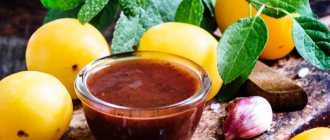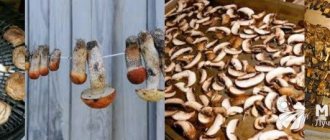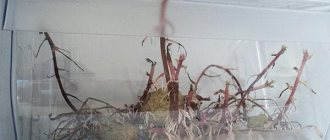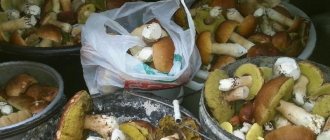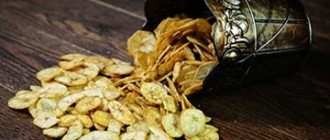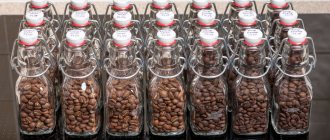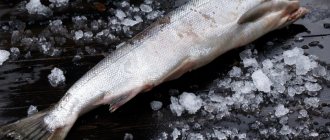Onions are one of the most common components of dishes in our country, and throughout the world. Due to the presence of a number of useful substances , mainly vitamins, minerals and phytoncides, it has been used since ancient times as an independent dish and as a food additive.
The vegetable has bactericidal properties and is useful as an alternative to many medications. Its cultivation area covers almost the entire globe. You can even grow it right in your apartment. Its only drawback is that it quickly deteriorates and loses its taste over time. Over thousands of years of use, people have come up with many ways to preserve it.
What and what factors influence the shelf life of onions?
The main factors affecting the shelf life of onions are as follows:
- Air temperature . The optimal temperature is from -1 to +3 degrees, depending on the variety.
- Air humidity . Optimal humidity is 70-80%.
- Ventilation . In a room with free air circulation, vegetables are stored longer.
- Onion variety . Spicy varieties last longer, sweet varieties germinate faster.
- Storage container.
Storage conditions
The optimal temperature for storing onions is considered to be + 0 ° C - 5 ° C, while the ambient humidity should not exceed 80%. Important
. The question of “how to store onions” can be resolved if there is good ventilation in the room. Otherwise, problems are guaranteed.
On a note!
Temperatures above normal usually promote stem growth, which means the bulbs will sprout. But, with increasing air humidity parameters, roots usually begin to grow. Well, at temperatures below zero, the onion simply freezes.
Before installation
To store onions, we need to prepare our vegetable storage facilities. Treatment with sulfur dioxide will help here, and it is advisable to destroy all plant residues. In this way, we fight various infections.
Periodic inspection
necessary when storing onions. Here, 2 - 3 times per storage season, this procedure is carried out.
It is better not to place crops that require higher humidity for storage in the same room as onions.
Close tightly
boxes are not allowed. The onion must breathe. Otherwise, it will spoil.
On a note!
The hotter the onion, the lower the temperature needed for storage.
Onion layer
should be no more than 30 cm, which means the boxes should not be high. Here, if the crop suffers, it will not be much.
We make sure that there are no strong and frequent temperature changes. And it’s better if there are no differences at all.
How to store in the cellar?
In cellars and basements, onions are stored in unsealed containers, fabric bags or in bulk.
Options for placing onions in the cellar:
- In boxes . Onions need air flow to ensure good preservation. Vegetables must be laid in a layer of up to 50 centimeters, otherwise the product will spoil. Boxes should not be placed directly on the floor, and they should not touch the walls.
- In bags . To store bulbs you need to use bags made of natural fabric. Do not store onions in plastic or synthetic fabric bags to prevent condensation. Onions are placed in bags of several kilograms.
- In egg containers . Many people use egg containers. The advantage of this method is that the bulbs do not touch each other. The use of plastic containers is unacceptable.
- In nylon stockings . One of the most popular storage methods due to its ease of use. This method allows for good ventilation of the product. You just need to put the bulbs in a stocking and hang it.
- In braids . The simplest and most accessible, but labor-intensive method is hanging the bulbs in braids. To do this, they are tied to a rope, and as a result, a kind of grape cluster is formed. The prepared braid is hung from the ceiling.
The product stored in the cellar needs to be checked from time to time .
If the bulbs begin to sprout or become soft to the touch, it means there is a high level of humidity in the room. In this case, you need to ventilate the basement, remove sprouted and soft bulbs, and sprinkle lime or other moisture-absorbing substance on the floor.
Features of cultivation
Yalta onions are grown in seedlings even on the peninsula. In the middle zone, they do the same. In 3–4 months you get good, full-fledged, high-quality heads. To grow seedlings, you will need ordinary boxes designed for this purpose. A layer of fertile soil is poured into them and the preparation of seeds begins.
See also
When and how to harvest onions in the northwest: recommendations for digging in different regions of RussiaRead
Sowing dates typically fall in mid-February. To speed up the germination process, Yalta onion seeds are soaked in water for 2 days. Next, they are dried to facilitate sowing. Experienced gardeners wait until some of the seeds hatch and only then begin to sow them.
Grooves 1 centimeter deep are made in the soil. Leave a distance of 5 centimeters between them. The seeds are placed at a distance of 1 centimeter from each other. Watering the Yalta onion is carried out from a spray bottle. Otherwise, you can wash the crops. The box is placed in a warm room with good lighting.
As soon as the Yalta onion shoots begin to appear, the temperature during the day is maintained at +16 °C, and at night - no higher than +10 °C.
In order to grow Crimean onions in seedlings, the soil should not be allowed to dry out too much. Watering is stopped exactly a week before diving into open ground. During this time, the seedlings are hardened off. During the day, the boxes are taken outside. If there is no threat of night frosts, then you can leave the plants overnight.
During the period of growing green mass, Yalta onions require a large supply of nutrients. Once every 2 weeks, fertilizing with complex mineral fertilizers is carried out. Diving into open ground is carried out only when the young plant already has 3 feathers and its height is 20 centimeters. As a rule, 2 months pass from the moment the seeds are sown.
Can it be stored in the freezer?
It is permissible to store onions in the freezer, but at the same time it will lose some of its taste and acquire a watery taste . It can be stored in this way either whole or sliced. Before freezing, the bulbs must be peeled, washed and dried.
The product must be packaged in sealed containers - plastic containers or bags without access to air. Plastic bottles are suitable for finely chopped onions. If the packaging is not sealed, the vegetable will emit an odor that will negatively affect neighboring products.
The ideal storage temperature for frozen onions is below -18 degrees . It is generally accepted that the maximum shelf life when frozen is from 6 to 12 months .
It is best to divide the product prepared for freezing into small batches , since after defrosting it must be used for food immediately, otherwise it will quickly spoil. The product is not suitable for re-freezing.
Placing it in the freezer is not the most ideal option and can only be used if there is no alternative.
Some more interesting ways to preserve onions
Both onions and green fresh onions can easily withstand freezing, only losing their sharpness - like after scalding, which is often only a plus. You need to wash the onions, let them dry on a towel, chop them, then place them in a single layer in trays or on wide plates with sides, stack them and put them in the freezer. When the pieces are frozen (after about 8 hours), all that remains is to pour them into bags so that they take up less space. This method will help to obtain crumbly spice, and the housewife will not have to break a whole frozen piece.
We recommend: 8 things that don’t make sense to keep at home if you want comfort
The second original method is salting. The pieces are placed in glass in layers, each of which is generously salted. You can twist vegetables and herbs in the same way as you do with cucumbers or squash - the pickled seasoning turns out tasty and piquant in taste.
The third unusual method is suitable for both fresh and fried onions. The point is to prepare the sauce using butter: mix it with onions and any spices to taste. The sauce is used to season ready-made dishes or for cooking. The main advantage is that the onion retains its pungency. You need to keep the workpiece in the freezer.
And, of course, green onions are dried: on a sunny balcony or in a special apparatus, or, in extreme cases, in the oven with the door open (temperature - about 50 degrees, pieces - approximately 5 mm in length and no more than 1 cm in width and height). This seasoning is noticeably inferior in aroma and taste to fresh or salted onions, but it will definitely last for more than one month (especially in closed boxes) and will not acquire an unusual shade in taste.
Feel free to buy a lot of onions in the season when they are full of juices and inexpensive, do not be afraid to plant them generously in the beds - preserving the vegetable is not a problem, and it will delight you with its taste and benefits all autumn, or even winter until spring.
Can it be stored in the refrigerator?
The optimal temperature to ensure the safety of onions is from +1 to +3 ℃ . The temperature is the same in the main chamber of the refrigerator. When placing it in the refrigerator, it is important to consider that it transfers its smell to other products, so it is better to pack it.
Maximum shelf life in the refrigerator is up to 2 months . This is due to the increased level of humidity in the refrigerator compartment.
Onion sets
The set should lie all winter and not shoot and start to grow. To do this, the seed must be well dried. Such bulbs can be kept both warm (at 18-20 degrees) and cold, for example, on a glassed-in loggia or in a pantry, if there are no heating / water pipes running there.
Bulbs for planting are also stored in the refrigerator, in a compartment with a temperature no higher than +2 degrees and preferably with plenty of air.
It is not recommended to store a very small set, less than 1 cm in diameter: it is easy to overdry, so it will not sprout in the spring. The best option is to plant it in the fall. In the soil, under a layer of snow, the bulbs will not germinate prematurely, dry out or freeze.
How to store peeled or cut onions?
Peeled vegetables can be stored in the refrigerator in the following ways:
- Wrap in plastic wrap (shelf life up to 5 days)
- Completely submerged in water (shelf life up to 7 days)
- Place in a container (storage time – 24 hours)
- Salt the saucer and place the cut side on the salt (shelf life up to two days)
- Grease the cut with vegetable oil and place in a sealed container (storage period up to 7 days).
Peeled vegetables can be stored at room temperature for no more than 12 hours.
When to harvest
How well the onions will be stored primarily depends on the right moment for harvesting.
It is believed that the optimal time for digging onions is from early August to early September. Naturally, the exact period depends on the climatic conditions of the region and whether the summer was dry or rainy. It is not difficult to determine whether a vegetable is ripe: its husk will easily come away from the bulb, and the feathers will dry out and turn yellow.
It is necessary to harvest on a dry day so that rain does not damage the plant. Try to select for long-term storage those specimens that do not have any damage, stains or traces of insects on their surface.
The vegetable must be ripe, otherwise it will quickly deteriorate during storage. An overripe plant should not be used for long-term storage: it begins to sprout roots and new green shoots within a month or two, which means it will become unsuitable for cooking.
Experienced gardeners know that late-ripening varieties are best stored. And early and sweet ones, such as the Yalta variety, are not very suitable for storing for the winter.
The new crop should be stored in a dry and cool place, away from direct sunlight. If the humidity is too high, the bulbs will quickly begin to rot.
You can also grow this plant for the next season using nigella - onion seeds. They are black in color, which is why they got their name. It is necessary to wait until the plant is completely ripe, and then cut off the inflorescences and leave them to dry. It is better to store arrows with seeds in a dry place: this way they will be easily separated.
Read more about methods of growing onions in our article.
How to determine that an onion has gone bad and what to do in this case?
If a vegetable begins to deteriorate, it emits a characteristic smell of rot . Also a sign of damage by putrefactive bacteria is blackening in the neck area. If these signs are not observed, you need to check the crop by touch. A sign of rapid product loss is softness under the top layer when pressed.
A spoiled product is not recommended for use as food, even if the internal layers are intact.
First of all, when identifying damaged specimens, it is necessary to sort through the entire stored crop and separate the preserved ones. After this, you need to reconsider the conditions of detention and repack the plants.
Characteristics of the variety
Yalta, or as it is also called Crimean onion, was brought to the peninsula by travelers in the 19th century. This is a prominent representative of the Madeira flat species, known throughout the world. It is well suited for use in fresh salads because it has no bitterness. The description of the variety suggests that the composition contains little essential oil, so it does not irritate human mucous membranes during processing. It is interesting that such properties are preserved only in plants that grew on the southern coast of the Crimean peninsula.
A characteristic feature of the Yalta onion is the pink or purple color of the protective scales. But the thick juicy scales have a traditional white color, in rare cases - pale pink. On one bulb there can be no more than 7 juicy scales, the thickness of which is about 7 millimeters. The shape of the head is flattened, round.
Yalta onions have a long ripening period. The growing season of this variety is 140–150 days from the moment of emergence. It is suitable for cultivation in the middle zone, but changes in climatic conditions will entail a change in taste.

